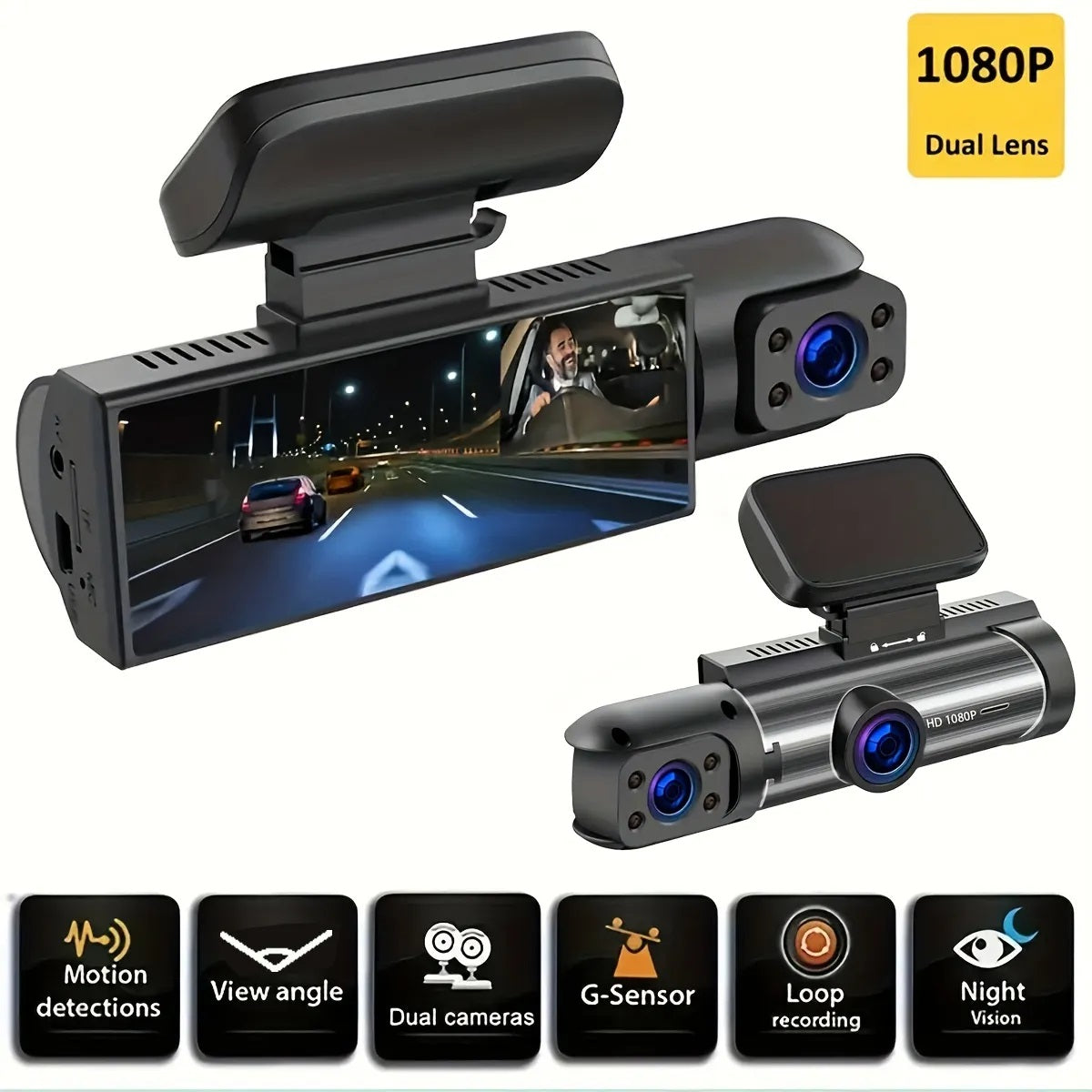
Dashcam car camera
Find out everything you need to know about Dashcams
Introduction to Dashcams
Dash cams have become a must-have accessory for many drivers. They offer a variety of benefits, from increased safety to video evidence in the event of an accident. In this article, we’ll explore the different features of dash cams, how they work, what to look for in a good dash cam, and best practices for using them.
Why Use a Dashcam?
Security and Protection
Dashcams, or on-board cameras, play a crucial role in driver safety and protection. They continuously record the road and potential incidents, providing valuable evidence in the event of an accident. These recordings can demonstrate the liability of the parties involved, facilitating insurance claims. In addition, the visible presence of a dashcam can deter dangerous or fraudulent behavior, such as insurance fraud attempts. In the event of a dispute, the captured footage serves as objective testimony, reinforcing the driver’s credibility. Finally, some dashcams offer advanced features such as collision alerts and lane keeping, contributing to safer and more proactive driving.
Evidence in Case of Accident
Dashcams are valuable tools for providing evidence in the event of an accident. They continuously record the road and capture every detail of the incident, helping to clarify the circumstances and responsibilities. These recordings are often accepted by insurance companies and legal authorities as objective evidence. They can demonstrate the sequence of events, prove the driver's innocence or establish the fault of another party. In addition, dashcams can capture key elements such as license plates, traffic conditions and the behavior of other drivers. In the event of a dispute, these images become indisputable testimonies, facilitating the resolution of disputes and speeding up compensation procedures.
Vehicle Monitoring
Dash cams provide continuous and effective vehicle monitoring, improving safety and peace of mind for drivers. With their continuous recording capability, they capture everything that happens around the vehicle, even when parked. Many modern dash cams have motion and shock detection features, activating recording as soon as suspicious activity is detected. This helps deter vandals and provides evidence in the event of theft or damage caused by third parties. The recordings can also help identify those responsible for minor crimes or accidents while parked. As such, dash cams are essential tools for ensuring proactive and safe vehicle monitoring.
How does a Dashcam work?
Continuous Recording
The technical function of continuous recording of dashcams is based on advanced loop video capture technology. This feature allows the camera to film continuously, overwriting old recordings with new ones when the memory is full. Thanks to motion and shock detection sensors, dashcams can identify and mark important events, ensuring that they are not overwritten. The videos are recorded in high resolution, offering clear and detailed images, essential for incident analysis. Modern dashcams also feature high-capacity memory cards and cloud storage options, ensuring secure data backup. Thus, the continuous recording function ensures reliable and uninterrupted vehicle monitoring.
G-Force Sensors
G-Force sensors in dashcams play a crucial role in vehicle monitoring and safety. These sensors detect sudden changes in acceleration, typical during an impact or collision. When such a change is detected, the G-Force sensor automatically activates recording and marks the corresponding video footage as an important event. This prevents accidental deletion of critical recordings. G-Force sensors thus help capture essential evidence to determine liability in the event of an accident. In addition, this technology improves the accuracy of the data collected, providing detailed information on the force and direction of the impact. In short, G-Force sensors optimize the reliability and efficiency of dashcams.
Integrated GPS
More advanced dashcams can include a built-in GPS module. Built-in GPS in dashcams add a valuable dimension to vehicle monitoring. This technical feature allows not only video recording, but also real-time location data. Each video clip is associated with GPS coordinates, providing precise information on the vehicle's location, speed and direction. In the event of an accident, this data is crucial for reconstructing the sequence of events and determining the exact circumstances. Built-in GPS also facilitates journey tracking, helping drivers analyze and improve their driving habits. In addition, in the event of theft, GPS location can help find the vehicle. Thus, built-in GPS increases the functionality and usefulness of dashcams.
Choosing the Right Dashcam
Video Quality
When choosing your dashcam based on video quality, several criteria are essential. Opt for a high resolution, ideally Full HD (1080p) or 4K, to capture sharp and detailed images. The clarity of the recordings is crucial for identifying license plates and faces. Also check the performance in low light conditions: a dashcam with good night vision, often ensured by high-quality sensors and high-performance lenses, is essential for effective surveillance at night. In addition, a wide viewing angle, of at least 140 degrees, allows you to cover a large portion of the road. Finally, consider the frame rate (FPS), with a minimum of 30 FPS for smooth videos. These elements will guarantee high-quality recordings, essential for safety and evidence in the event of an incident.
Viewing Angle
The viewing angle of dashcams is a key feature that influences their effectiveness. A wide viewing angle, ideally between 140 and 180 degrees, allows for a larger portion of the road and surrounding area to be captured. This means that in addition to the lane of travel, curbs and intersections are also recorded, providing a complete view of events. A wider viewing angle increases the likelihood of capturing crucial details in the event of an accident, such as vehicles approaching from the side or pedestrians. However, too wide an angle can cause distortion of the footage, so it is important to strike a balance. In short, the viewing angle of a dashcam is essential for maximum coverage and accurate documentation of road incidents.
Additional Features
Modern dashcams offer a range of additional features that improve safety and convenience for drivers. These include motion detection, which activates recording when movement is detected around the parked vehicle, useful for anti-theft monitoring. Dashcams can also have built-in GPS sensors to record the vehicle's location and speed along with the video. Some come with advanced features such as night vision, lane departure warning and collision detection, which help prevent accidents by alerting the driver to unsafe driving behavior. Other features include Wi-Fi connectivity for easy transfer of videos to a mobile device and night vision for clear recording at night.
Ease of Installation
Dash cams are designed to be easily installed by users, even without advanced technical skills. Most models come with suction cup or adhesive mounts that simply attach to the windshield. Installation usually requires just a few simple steps: clean the mounting surface, attach the mount, and then connect the dash cam. Some more advanced models may require more complex wiring for power, but many work with a cigarette lighter socket for a quick plug-and-play installation. Additionally, dash cams often come with detailed and intuitive installation guides to help users properly install the device. In short, the ease of installing dash cams makes them a convenient accessory to improve vehicle security and surveillance without the need for professionals.
Best Practices for Using a Dashcam
Proper Installation
For proper dashcam installation, there are several steps that need to be followed to ensure optimal operation and maximum effectiveness. First, it is crucial to position the dashcam on the windshield in such a way that it provides a clear and unobstructed field of vision. Ideally, it should be placed behind the rearview mirror to minimize visual distractions. Make sure the camera is properly aligned horizontally to properly capture the road and surrounding vehicles. Use a strong suction cup or adhesive mount to ensure the dashcam stays in place even on bumpy roads. Next, connect it to a suitable power source, such as a cigarette lighter socket, and hide the cables along the windshield for a clean and discreet installation. By following these tips, you can ensure that your dashcam works effectively and provides continuous protection on the road.
Regular Maintenance
Check the memory card regularly and format it to avoid file corruption issues. It is also important to clean the camera lens regularly to maintain clear image quality.
Firmware Update
Dashcam manufacturers often release firmware updates to improve performance and add new features. Be sure to keep your dashcam up to date to benefit from the latest improvements.
The Legal Benefits of Dashcams
Evidence in Disputes
Dashcams offer significant benefits in litigation by providing clear and objective video evidence. In the event of an accident, dashcam footage can accurately document the circumstances, which is essential for establishing liability and resolving disputes quickly. Videos can also help prove the driver’s innocence, protecting against false accusations and fraudulent claims. Additionally, captured footage can be used as evidence in court, enhancing the credibility of witness testimony and improving the chances of success in litigation. Finally, dashcam technology is often recognized and accepted by insurance companies and legal authorities, making the claims and case settlement process easier. In short, dashcams are essential tools for increasing the chances of success in driving-related litigation.
Fraud Reduction
Dashcams play a crucial role in reducing road accident and insurance claim fraud. By continuously and objectively recording, they capture accurate evidence of events, making it difficult for fraudsters to falsify the details of an accident. Videos can clearly show the exact circumstances of the incident, including the behaviors of other drivers involved. This also deters insurance fraud, as fraudsters know their actions will be recorded and can be used against them. Additionally, dashcams provide a strong defense for innocent drivers who are wrongly accused, improving justice and transparency in the insurance claims process. In summary, dashcams play a crucial role in preventing and reducing fraud, ensuring better safety and protection for honest drivers.
Real Case Studies
Avoidable Accidents
There are many cases where dashcams have helped demonstrate liability in preventable accidents. For example, a driver was able to prove that he had obeyed traffic lights thanks to his dashcam footage, which led to a favorable decision in an insurance dispute.
Unexpected Situations
Dash cams also capture unexpected situations on the road, like meteors streaking across the sky or animals crossing the road. These videos can go viral and show the importance of having a camera always ready to record.
Conclusion
Dash cams are valuable tools for any driver, providing safety, security and peace of mind. By choosing a quality dash cam and installing it correctly, you can enjoy many benefits, whether it’s providing evidence in the event of an accident, deterring fraudulent behaviour, or simply capturing unexpected moments on the road.
Investing in a dashcam is a smart decision to enhance your driving experience and protect your interests. Whether you are a daily driver or take long trips, a dashcam can be your reliable eyewitness on the road.














